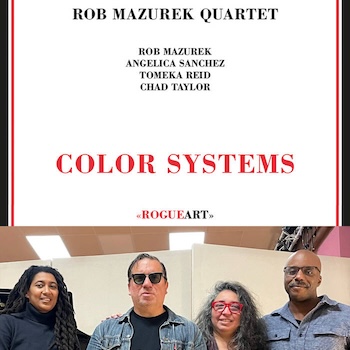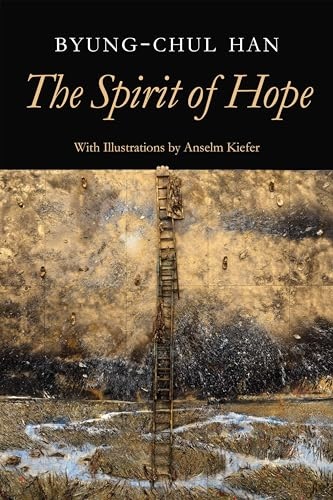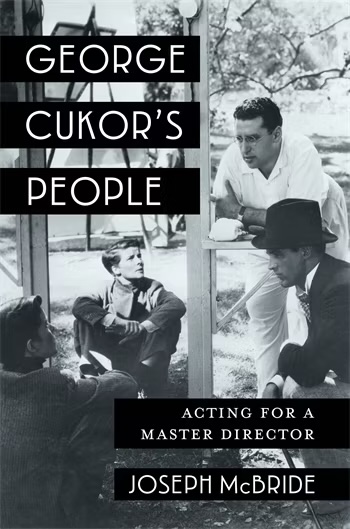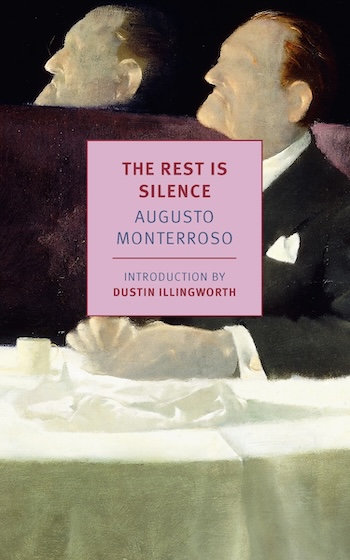January Short Fuses — Materia Critica
Each month, our arts critics — music, book, theater, dance, television, film, and visual arts — fire off a few brief reviews.
Jazz
 Would that all Christmas albums and EPs were like this one — they have a tendency to overstay their welcome ’roundabout track 7. Stella Cole’s Snow! (La Reserve) is just right in every respect, however. It’s a warm, creamy, and sweet mug of audio cocoa.
Would that all Christmas albums and EPs were like this one — they have a tendency to overstay their welcome ’roundabout track 7. Stella Cole’s Snow! (La Reserve) is just right in every respect, however. It’s a warm, creamy, and sweet mug of audio cocoa.
Cole is a young singer with considerable gifts who has reached a refreshingly enthusiastic new generation of listeners for the Great American Songbook on TikTok and YouTube. She’s been delivering on her early promise, and she’s recently released her eponymous first album.
Given her love for old musicals, it’s not surprising that Snow! features songs from Meet Me in St. Louis and White Christmas. The great Alan Broadbent plays piano on most tracks and did some of the lush, old-school string arrangements.
There are many glistening highlights. Cole freshens up the lyrics to “It’s Beginning to Look a Lot Like Christmas” by sounding genuinely amused by them. She rediscovers a dramatic Nancy Wilson song, “That’s What I Want for Christmas,” which she’s made popular on the streaming services. It has the same sentiment as Mariah Carey’s “All I Want for Christmas Is You,” with the staggering advantage of not being Mariah Carey’s “All I Want for Christmas Is You.”
The biggest gift is “Have Yourself a Merry Little Christmas,” the most beautiful of the Christmas standards. Cole rightly emphasizes the melancholy trying vainly to hide in the song, just as Judy Garland did (with real tears in her eyes) in Meet Me in St. Louis. Cole can be a bit breathy at the ends of phrases, cutting it pretty close to straight-up Garland impersonation rather than inspiration. But that isn’t necessarily a criticism.
Consider yourself lucky if you got some Cole in your stocking this year.
— Allen Michie
 Chicago may no longer be that “Toddlin’ Town” of yesteryear, the city is still a source for some considerably adventurous music.
Chicago may no longer be that “Toddlin’ Town” of yesteryear, the city is still a source for some considerably adventurous music.
Rob Mazurek won recognition in the windy city after he co-founded the Chicago Jazz Collective and, later, the Exploding Star Orchestra. At this point, the now 60-ish trumpeter takes a role in many other projects.
All the members of the quartet on his new disc, Color Systems (RogueArt), connect to the Chicago jazz scene in one way or another, though they have also enhanced their highly respected careers outside of the city limits. Longtime Mazurek associate Chad Taylor fills the drum chair: Tomeka Reid (cello) and Angelica Sanchez (piano) fill out the personnel.
They perform a bold set of six Mazurek compositions, pieces loosely inspired by the work of several visual artists. It’s far from a blowing session, though each musician is given opportunities to poke at the limits of their instrument’s expressive range. The compelling result: a lineup of music that is both expansive and meditative — part measured chamber jazz atmospherics, part in-the-moment freewheeling improv.
“Four Page Color System for Louise Nevelson” constructs its ambiance out of seemingly discrete segments, bound together by the strings and wire of Reid and Sanchez. Taylor attempts to supply a tumbling pulse while Mazurek provides melodic suggestions. Momentum accretes … until it dissolves.
In “Four Page Color System for Richard Tuttle” Reid generates an agitated percussive tangle while Taylor scrapes and taps at his kit. Sanchez grabs a piece of the action underneath the leader’s plaintive outbursts. Taylor locates a groove, out of which the pianist sets up a lead-in to a spacious denouement that includes a hint of the blues.
In an ideal world, “Three Colors on a Four-Sided Box for Ellsworth Kelly,” would be the single off the disc. Relatively linear, the track chugs along, propelled by an inviting energy; the players pull out various threads but keep to a central scheme, proving that, amid all the experimentalism, there’s jazz in this band.
— Steve Feeney
Design

Rendering of a section of Saudi Arabia’s 170 km-long horizontal city, The Line.
Urban design history is littered with compromised visions, botched projects, unattainable goals, unintended consequences, and grand designs never realized. Is it surprising that human reach often exceeds its grasp?
It is not clear that NEOM, a futuristic urban district being built by the Kingdom of Saudi Arabia in the Tabuk Province, which is located in northwest Saudi Arabia at the northern tip of the Red Sea, will be another case of visionary future-perfect meeting problematic reality. But there are certainly a lot of questions.
Part of the Saudi Vision 2030 plan to diversify the country’s economy and reduce its dependence on oil, NEOM was initiated in 2017 by Crown Prince Mohammed bin Salman. Set at the northern tip of the Red Sea across from Egypt and south of Jordan on the Gulf of Aqaba, the total planned area for the community is 10,200 sq miles. Multiple subregions would host a floating industrial complex, global trade hub, tourist resorts, and an enclosed linear 106-mile-long and 1640 ft high smart megacity (The Line) to be powered by renewable energy sources — no cars, zero carbon emissions, and autonomous amenities.
The budget is $1.5 trillion. The Line, scheduled to be completed by 2030, was tailored to house 1.5 million. Now, maybe not. The Saudis have hired many of the world’s leading international architects to realize this expansive urban dream. These include Gensler, HOK, Pei Freed, Adjaye Associates, Morphosis, BIG, OMA, Foster+Partners, Zaha Hadid Architects, LAVA, etc. The project’s phase budgets and fees are extremely appealing for the architectural firms involved, but ample (and growing) controversy hangs over this colossal development.
Disagreements center on construction workers’ human rights (it is estimated 21,000+ have died to date), how environmental damage in a desert affects regional ecosystems, and the reality that 20,000 locals have been forcibly moved to make way for the project. As of 2024, aspects of the project are already being scaled back. Another immense dispute: whether anticipated technology will be ready when forecasted. Questions abound about how architects and planners can ethically deal with these issues. Some have already resigned. A line in the sand?
— Mark Favermann
Books
 In her photography, social documentarian Dona Ann McAdams has always focused on the particularity of a place and the innate humanity of the people in that locale. Her latest book, Black Box: A Photographic Memoir (Saint Lucy Books), chronicles her stellar 50-year career, beautifully reproducing 107 pictures as well as serving up some interesting backstories.
In her photography, social documentarian Dona Ann McAdams has always focused on the particularity of a place and the innate humanity of the people in that locale. Her latest book, Black Box: A Photographic Memoir (Saint Lucy Books), chronicles her stellar 50-year career, beautifully reproducing 107 pictures as well as serving up some interesting backstories.
McAdams studied photography at the San Francisco Art Institute in the ’70s. She writes about running out of film and stopping at the Castro Camera store, where owner (and politician) Harvey Milk urged her to weave politics into her aesthetics. Her images of the burgeoning gay pride movement, sex workers, and activist Angela Davis are testaments to the wisdom of Milk’s advice. After his assassination in 1978, McAdams moved back East.
In New York, McAdams found herself amid an avant-garde community of artists. She became the house photographer at Performance Space 122 for 23 years, capturing compelling images there and at other downtown venues. McAdams enlivens this volume with stories about some of the subjects of her iconic portraits, including Eileen Myles, Meredith Monk, Karen Finley, and David Wojnarowicz. Her body of work has won her Obie and Bessie Awards and her photos have been displayed at, among other places, the Museum of Modern Art, The Whitney Museum of American Art, and The International Center for Photography.
McAdams also talks about her experiences as a street activist. The volume offers adroitly shot images of queer liberation, ACT UP, antinuclear, and pro-choice protests — agitprop work that is of its time, but timeless.
In 1998, McAdams and her husband, writer Brad Kessler, moved to Vermont where they raise American Nubian goats. She turned her camera on the doings of neighboring farmers and their work animals. She also has an ongoing collaboration with a group of horsemen and women who work at the Saratoga Race Course in Saratoga Springs, New York.
The inclusion of ditties from McAdams’s childhood add considerable poignancy and humor to Black Box. There are also impish juxtapositions: she pairs a photograph of a docent lecturing beside a Degas sculpture at the Musée d’Orsay in Paris with an anecdote about an art teacher who would not let her write a paper on Diane Arbus because, he insisted, “Photography is not art.”
-John R. Killacky

The future looms ominously. An incomplete list of woes would include the climate crisis, the possibility of nuclear war, digital dominance led by AI, growing global economic inequity, higher rates of mental illness, and declining birth rates. Fear of what’s to come is fueling a collective nostalgia for the past, a confident assurance in the solutions provided by the same old same old, of escaping forward into vanished “great” times. (i.e., investors will be able to save the earth and make a tidy profit at the same time.) An understandable reaction to this blindness may explain the popularity of South Korean philosopher Byung-Chul Han, who in The Spirit of Hope (Polity Press, 98 pages, translated from the German by Daniel Steuer, illus. by Anselm Keifer) proselytizes for a concept of hope that transcends the self-defeating satisfactions of facile optimism.
There can be no engaged hope, writes Han, that does unflinchingly face the fears generated by doomsday scenarios. This is a necessary step for arriving at a vision of possibility — slim as it may be — that does away with modernism’s worship of instrumentalism, consumerism, and alienation. “Those who hope,” Han writes, “put their trust in possibilities that point beyond the ‘badly existing’. Hope enables us to break out of closed time as a prison.” In this dense meditation, Han critiques the limited ideas of hope promulgated by Albert Camus, Ernst Bloch, and Martin Heidegger (who gets a considerable drubbing) and praises the daydreams of “hopeless hope” expressed in the writings of Franz Kafka, poet Ingeborg Bachmann, and dramatist/Czech human rights activist Václav Havel. For Han, there’s no guarantee that things will turn out all right, but that uncertainty serves as the elemental ground for genuine hope. This is a call to mental arms that offers welcome flickers of needed inspiration. Hope “confronts the world in its full negativity and files its objections.” Once those have been made, it might be possible “to take the leap towards a new life.”
— Bill Marx
 I was 12 when I saw the film of the musical My Fair Lady (1964), when it first came out. It inspired my interest in the genre (a term I would not have known at the time), and I would spend many carefree moments playing that soundtrack LP and those from South Pacific, West Side Story, and others up in the sunporch, singing along with the lyrics.
I was 12 when I saw the film of the musical My Fair Lady (1964), when it first came out. It inspired my interest in the genre (a term I would not have known at the time), and I would spend many carefree moments playing that soundtrack LP and those from South Pacific, West Side Story, and others up in the sunporch, singing along with the lyrics.
That fad did not last long, and my interest in musicals did not revive until years later when I took some courses in graduate school. By then, My Fair Lady was no longer on the academic playlist. Even those who admired the director did not rate it highly. Not so Joseph McBride, who admits in his magisterial and encyclopedic new book George Cukor’s People: Acting for a Master Director (Columbia University Press, 336 pages, $39.99) that this is his unorthodox choice for his favorite film by the title director.
Moreover, McBride complains, Cukor himself has been underappreciated, never awarded the auteur status he is due. His omission from the canon, McCabe claims, discredits the concept itself. “Cukor’s diverse, seemingly self-effacing body of work,” he writes, “characterized by fidelity to the text and a discreet way of channeling his feelings through his actors, presents important questions about [the theory’s] validity and usefulness.” That said, McBride tempers his assessment by noting that the French critics who first cooked up the politique des auteurs regarded Cukor as a major artist.
This affinity with actors is the key theme in McBride’s book, a skill manifested over the decades beginning, from neophyte Lew Ayres, whom Cukor coached as an uncredited assistant into his shattering performance in the Oscar-winning All Quiet on the Western Front (1930) to longtime collaborator Katharine Hepburn (and first-timer Laurence Olivier) in his penultimate feature, Love Among the Ruins (1975).
And what of My Fair Lady, “disparaged by snobs,” according to McBride, but “in fact the quintessence of his work”? For one thing it demonstrates how an auteur can remake a much-handled property into his own masterwork. But more importantly, the film reflects the the power of the directorial process itself, in which an artist shapes a performer into his own creation.
– Peter Keough
 The deliciously absurd giveaway of Guatemalan short story writer Augusto Monterroso’s only novel, The Rest Is Silence (NYRB, translated from the Spanish by Aaron Kerner, 208 pages), is its misattribution of the volume’s title to The Tempest. Originally published in 1978, the book is a mischievously daffy portrait of the literary critic as Polonius. Eduardo Torres is a self-important pontificator who can’t put pen to paper without spewing out wild misinterpretations and wrong footnotes, inanities (“One could say that, before History, all was Prehistory”) and truisms (“If there were no geniuses, Mankind would lack the greatest works that it possesses today”).
The deliciously absurd giveaway of Guatemalan short story writer Augusto Monterroso’s only novel, The Rest Is Silence (NYRB, translated from the Spanish by Aaron Kerner, 208 pages), is its misattribution of the volume’s title to The Tempest. Originally published in 1978, the book is a mischievously daffy portrait of the literary critic as Polonius. Eduardo Torres is a self-important pontificator who can’t put pen to paper without spewing out wild misinterpretations and wrong footnotes, inanities (“One could say that, before History, all was Prehistory”) and truisms (“If there were no geniuses, Mankind would lack the greatest works that it possesses today”).
The volume is a “celebratory” festschrift that undercuts the public image of a man who, when he isn’t taking one of his frequent naps, won’t stop reading. Deflating testimonies come from the critic’s slavish, breast-obsessed secretary, his affectionate wife, who is incredulous that others take her fraud of a husband seriously, and mentally unsound brother. Unfortunately, Monterroso doesn’t provide sufficient examples of Torres’s hair-raising reviews; we do get a hilariously bizarre misreading of Don Quixote, followed by a letter by a scholar who methodically takes the critique apart. There’s also a collection of zany “Aphorisms and Maxims” and a wacky “Writer’s Decalogue.” But Monterroso’s line of attack invites more farcical fodder, something along the lines of Stanisław Lem’s seriocomic reviews of nonexistent books in 1971’s A Perfect Vacuum.
What is the use of blasting such an easy target? Yes, Torres is an example of the via errata for critics. But along with that there’s the novel’s vision of a compromise-minded bloviator who is admired among the chattering classes. Monterroso is out to bag not just Torres, but a play-it-safe cultural community that hails reviewers for not being critical: “What remains to be said? In these uncertain times, everyone is free to doubt and believe, to come to his own conclusions, or to those of others. Asinus asinum fricat.” [Latin for “An ass rubs up against an ass,” i.e. “idiots lavish praise on each other”.]
— Bill Marx
Classical Music
 The phrase “The Silk Road” refers to the routes by which goods were transported from one region in Asia to another, and eventually even to Europe. The concept inspired Yo-Yo Ma’s much-recorded Silk Road Ensemble, which often engages in collective improvisation.
The phrase “The Silk Road” refers to the routes by which goods were transported from one region in Asia to another, and eventually even to Europe. The concept inspired Yo-Yo Ma’s much-recorded Silk Road Ensemble, which often engages in collective improvisation.
The present album, by the Oslo Kammerakademi, a superb Norwegian wind ensemble, evokes the same history through fully worked-out pieces.
The best-known of the four composers, Saint-Saëns, wrote his fascinating Orient et Occident in 1869. The excellent booklet-essay posits that the middle section, which lays a one-line melody over a syncopated drone, was inspired by Turkish Janissary bands. (Listeners today know that style from “Turkish” pieces by Mozart and Beethoven.) The effective arrangement of the work is by a bassoonist who plays on one piece here.
André Caplet, a close friend of Debussy, contributes a Suite Persane (1900) for double wind-quintet that is perhaps closer to an earlier generation’s way of evoking “the Orient” than to Debussy: I was reminded of certain pieces by Borodin and Mussorgsky and to scene-setting moments in Massenet’s Hérodiade, yet the piece never feels like a pale copy.
Gisle Kverndokk is a successful Norwegian composer of operas and musicals. His 2017 The Silk Road is full of charm and variety, in 10 movements that “travel” from Venice to China, by way of Armenia, Kyrgyzstan, and other lands.
The album concludes with a 2011 piece by Turkish composer Mert Karabey: The Last Days of Sultan Selim III. Commissioned, like the Kverndokk, by this marvelous ensemble (bravo!), it makes prominent use of a tune composed by that sultan, and evokes his eventual murder by forces loyal to the new sultan, Mustafa IV, as a heavy-treading military march overwhelms and obliterates a heartfelt funeral cortège.
This is one concept album that works, as a whole and in its constituent parts.
— Ralph P. Locke
Music Tech
 Last week’s update to version 3.0 is as good excuse as any to recommend the app Radiooooo, available for free on the web or in the Android or Apple stores. There’s nothing else quite like it: it’s a music browser that will play you music from any country on earth from any decade in the history of recorded music. The new version includes a “Taxi” function where you can queue up specific countries and decades to take you on a journey (lest you you get bored with Cambodian boogie from the 1970s and want to mix it up with some matador music from 1920s Barcelona). There are three modes you can select: slow, fast, and weird. (You’re gonna want to try out “weird,” trust me.)
Last week’s update to version 3.0 is as good excuse as any to recommend the app Radiooooo, available for free on the web or in the Android or Apple stores. There’s nothing else quite like it: it’s a music browser that will play you music from any country on earth from any decade in the history of recorded music. The new version includes a “Taxi” function where you can queue up specific countries and decades to take you on a journey (lest you you get bored with Cambodian boogie from the 1970s and want to mix it up with some matador music from 1920s Barcelona). There are three modes you can select: slow, fast, and weird. (You’re gonna want to try out “weird,” trust me.)
But what really makes it essential is the shuffle mode. Play it for those arrogant kids who say they “like everything” when you ask them what they listen to. None of us have the faintest clue about the staggering (and often hilarious) diversity of the entire world’s recorded music from 1900 to the present. Just a random sample from today brought me a plaintive ballad from 1950s Algeria, a song from a kids’ TV show from 1970s France, and a seductive samba from 2010s Brazil.
Radiooooo has been around since 2013. Listeners from around the world contribute the recordings (they are encouraged to send only their favorites, not entire albums), and every track is reviewed and curated by a team of editors. There’s no GarageBand crap recorded in 10 minutes by somebody in their basement. Everything is purportedly legal and licensed. If you happen to collect 78s of Liberian rumbas, or indigenous country/pop from Canada in the 1970s, then Radiooooo wants to hear from you!
— Allen Michie
Tagged: "Black Box: A Photographic Memoir", "Color Systems", "George Cukor’s People", "Snow!", "The Rest is Silence", "The Spirit of Hope", Aaron Kerner, Augusto Monterroso, Byung-Chul Han, Dona Ann McAdams, George Cukor, Joseph McBride, NEOM, New York Review Books, Polity Press, Radiooooo, Rob Mazurek, Rob Mazurek Quartet, RogueArt, Saint Lucy Books, Saudi Vision 2030, Stella Cole
